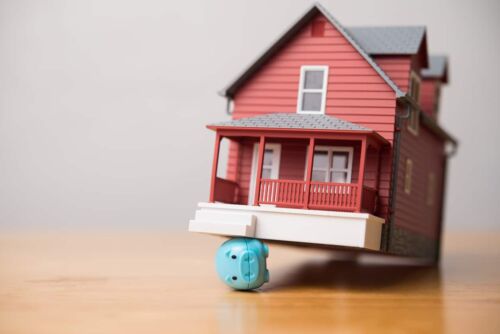Menu
Economic Pressure Ahead: Forecasting Rising Bankruptcy Rates
September 23rd, 2025

Over the last few years, it may feel like everything from national crises and natural disasters to personal instability have been adding up to put economic pressure on Connecticut families. With expenses on the rise and wage increases on pause, many people find they are falling behind on their debts. Soon, that could lead to rising bankruptcy rates. Find out what leads to increased consumer bankruptcies, and what that means for your family’s future.
Experts Predict Rising Consumer Bankruptcy Rates
The experts at Bankruptcy Watch recently reported a “big increase” in bankruptcy rates in 2025 compared to 2024 as of July 28, 2025. Chapter 7 bankruptcies – the most common type of consumer bankruptcy – were up 18.67% nationwide, while Chapter 13 bankruptcies had increased by 9.27%. They reported that bankruptcies were “on a steep climb” and warned that there could be “a growing number of account delinquencies” leading to even more bankruptcies to come in the future. Some predict that 2026 bankruptcy filings could climb even higher.
Connecticut falls right in the middle of the pack when it comes to state rankings of financial distress. The state ranked 24th in the nation for overall financial distress. In a survey conducted by WalletHub.com, Connecticut’s credit score was an impressive 8th in the country, but both debt search interest and loan search interest were far lower at 45th.
In 2023, there were 2,900 bankruptcy filings in Connecticut, including 2,315 Chapter 7 bankruptcies and 567 Chapter 13 bankruptcies. In 2024 (the last year on record), that number had increased to 3,337 total bankruptcy filings. That represents a 14.2% increase! Almost all of the additional filings were consumer bankruptcy petitions, filed by individuals or families, rather than business bankruptcies. The state is still 35% below the national average relative to its population, but the increasing number of filings show that Connecticut residents are feeling the financial squeeze, just like everyone else.
Factors That Lead to More Consumer Bankruptcy Filings
Individuals and families file for bankruptcy for many reasons, from a personal health crisis, natural disaster, or other financial crisis. However, there are also some national factors that are likely contributing to the increase in consumer bankruptcies:
Federal Student Loan Payments Resuming
During the COVID-19 pandemic, in March 2020, the federal government paused collections on its student loans. However, on April 21, 2025, the United States Department of Education announced that as of May 5, 2025, collections will resume. In that announcement, the government said that more than 5 million borrowers nationwide were over 360 days in default, and 4 million were in late-stage delinquency, and could face collections.
Housing Unaffordability
Increased housing costs – whether you rent or buy – are contributing to the financial pressures Connecticut residents face. Statewide, rents have increased 29% between 2021 and December 2024. Now, more than 120,000 Connecticut renters spend more than 50% of their income on housing costs. For potential homeowners, low supply is driving up prices, making housing even more unaffordable for many families.
Inflation and Tariff Costs
The news likes to report on the month to month, and sometimes day-to-day changes in inflation rates and new tariffs imposed on imported goods. In 2025, the inflation rate remained stubbornly above 2.3%. That, along with the tariffs, mean that household essentials, like groceries, clothing, medicines and more, cost more today than they have in years past.
Ballooning Consumer Debt
According to BankruptcyWatch, mortgage foreclosures had led to increased bankruptcy filings in past financial downturns. But this time, they have their eyes on ballooning consumer debt. They report “we now see bankruptcies tied entirely to credit defaults.” The Federal Reserve Bank reports that total household debt increased by 1%, up to a staggering $18.39 trillion in the second quarter of 2025. That means more consumer bankruptcy filings are going to be based on unpaid unsecured debt, like credit cards and personal loans, than in years past.
What to Do if You Are Facing Economic Pressure
There is a lot of advice out there for balancing household budgets and tightening your family’s financial belt. But with all the increased demands on your income, there may come a time when your debt simply exceeds your ability to pay it. Even if you can make the minimum payments, the “writing” may be on the “wall”, especially when you consider how long it will take to pay off the debt at that rate (it’s on the statements) and how throwing good money after bad will impact you and your family and your ability to create wealth as time goes on. In these situations, you should speak with an experienced bankruptcy attorney who can help you review your financial situation, determine what kind of bankruptcy you qualify for, and decide whether it will help relieve the pressure.
Get Ahead of Rising Bankruptcy Rates With the Help of an Experienced Connecticut Bankruptcy Attorney
If economic pressures and unpaid bills are making you consider bankruptcy, we can help. At Lawrence & Jurkiewicz, we focus our practice on helping people. We can advise you on when and how to file for bankruptcy, so you can quiet debt collector calls and get a new start.
Feeling overwhelmed by debt or worried about bankruptcy? Lawrence & Jurkiewicz is here to help you explore your options and guide you toward the best path forward. We assist clients throughout Connecticut with bankruptcy negotiations. Reach out today contact us or call 860-264-1551 for a free consultation.
Categories: Bankruptcy



